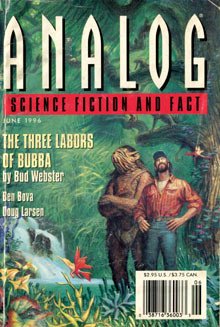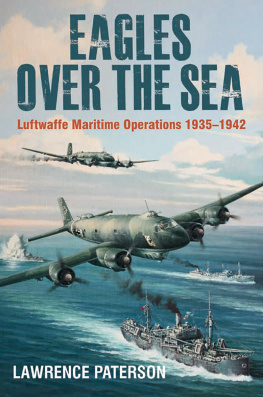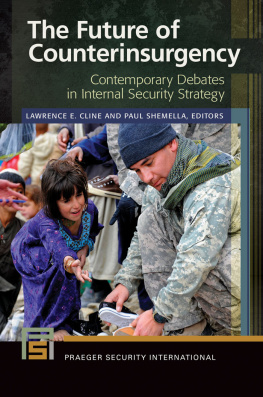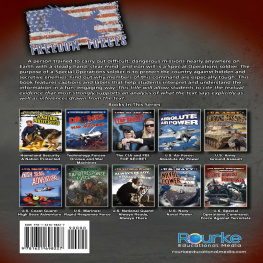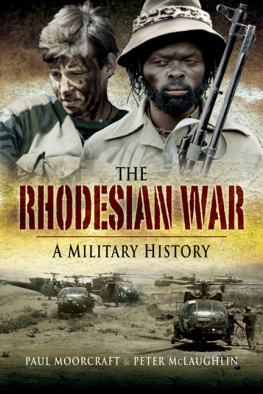This edition is published by PICKLE PARTNERS PUBLISHINGwww.picklepartnerspublishing.com
To join our mailing list for new titles or for issues with our books picklepublishing@gmail.com
Or on Facebook
Text originally published in 1999 under the same title.
Pickle Partners Publishing 2014, all rights reserved. No part of this publication may be reproduced, stored in a retrieval system or transmitted by any means, electrical, mechanical or otherwise without the written permission of the copyright holder.
Publishers Note
Although in most cases we have retained the Authors original spelling and grammar to authentically reproduce the work of the Author and the original intent of such material, some additional notes and clarifications have been added for the modern readers benefit.
We have also made every effort to include all maps and illustrations of the original edition the limitations of formatting do not allow of including larger maps, we will upload as many of these maps as possible.
DEFINING CRITICAL TECHNOLOGIES FOR SPECIAL OPERATIONS
Lawrence W. McLaughlin
Major, United States Air Force
B.S., United States Air Force Academy, 1988
ABSTRACT
As the military forces of the United States continue to draw down, Special Operations Forces (SOF) are playing a greater role across the entire spectrum of conflict. In order to maintain its relative advantage, SOF is using technology as a means to leverage limited resourcessometimes to the point that mission accomplishment depends critically on a technologys availability. Adversaries will attempt to challenge our advantages. Whether Special Operations Forces are prepared to operate in a degraded environment could determine success or failure.
This thesis examines the issue of critical technologies in special operations. Critical technologies are defined according to three variableslevel of dependence, degree of vulnerability, and substitutability. By examining technologies against these three variables, SOF can gain a better understanding of the impact to SOF operations if a technical capability is lost. Three technologies are examined to illustrate the modelthe use of Radar in the Battle of Britain, the Global Positioning System, and UHF Satellite Communications.
By applying the model to actual cases, I hope to encourage SOF decision-makers to closely examine our growing reliance on vulnerable technologies as a force multiplier and provide recommendations to prevent undue reliance on those technologies.
I. INTRODUCTION
A. BACKGROUND
Technological advancement is a critical aspect of any study of military operations. It is impossible to dissociate war from the technological means of fighting war. John H. Morse, former US Assistant Secretary of Defense, stated, It is more the march of technology than it is the political decisions which drives the nature and structure of our societies, our strategy, the nature of military forces, their structure and the doctrine they develop (Holmes, 1988, p. 7). Technology, in short, has played a central role in shaping the strategy, doctrine, and organization of military units. The longbow, repeating rifle, maxim machine gun, airplane, tank, radar, and radio have all had a major impact on how war has been conducted throughout the ages.
Although technology has played a vital role, it has significant limitations. Adversaries have been very successful in countering technological advancements and leveling the playing field. The Zulus against the British, the plains Indians against General Custer, the Vietnamese against the French and Americans, the Afghans against the Soviets-all examples of a less sophisticated foe defeating a technologically superior force.
B. RELEVENCE
More than ever SOF will depend on leading-edge technology to provide the critical advantage and to support participation in a growing number of technologically complex and challenging missions and operations. ( SOF Posture Statement , 1998, p. 40)
Technological superiority enables small, highly trained teams or individuals to successfully accomplish tasks that would be too costly or physically impossible for larger forces. ( SOF Posture Statement , 1998, p. 11)
Special Operations Forces (SOF) play a unique role as a strategic asset of the United States. The changing world dynamics have placed SOF in a precarious position. As the military forces of the United States continue to draw down, SOF is playing a greater role across the entire spectrum of conflict. Our forces are continuously using technology as a means to leverage limited resources and USSOCOM is especially committed to the development of new technologies to maintain a relative advantage. Conversely, SOF must be careful not to put too much emphasis on technologies that could be countered by enemy action. With the proliferation of advanced technologies in an ever-shrinking world, it is likely that future adversaries will develop measures to counter our advantages. We must not forget that combat is a dynamic interaction between two opposing forces, therefore, an advantage in capability at the beginning of a conflict may be degraded or eliminated. Whether SOF is prepared to operate in a degraded environment may be critical to determining success or failure. As the previous excerpts from the SOF Posture Statement imply, there is every indication that SOF will continue to pursue more advanced technologies to maintain an edge. It is therefore essential to step back and examine how new technologies are being used, the effect of their possible loss, and develop a means to examine when a technology becomes so important that mission accomplishment rests on its availability.
C. PURPOSE
The purpose of this research is to answer the following questions:
- How can we determine which technologies are critical to Special Operations Forces?
- What are the vulnerabilities of these technologies?
- What is the potential impact on SOF if these technologies are lost?
This thesis will develop a model that can be used to identify technologies that are essential to SOF operations and consider the impact of the loss of these technologies on mission accomplishment. An additional purpose of this effort is to encourage SOF decision-makers to closely examine our growing reliance on technology as a force multiplier. It should encourage commanders and operators to look beyond the initial engagement and develop a longer term view of warfare against an adversary with the means to eliminate or significantly degrade our technological advantage. The first step in this process is to define what makes a technology critical . The following section defines critical technologies based on three important variables.
D. DEFINING CRITICAL TECHNOLOGIES
The idea of critical technologies is not new to the Department of Defense. For over a decade, the DoD has been required to submit to Congress a list of technologies that it considers critical to ensuring the continued qualitative superiority of US weapons systems (Jefferson, 1989). The technologies that appear on this list are not specific to any service or mission and are often very general. Some of these technologies include microelectronics, robotics, integrated optics, data fusion, and lightweight composite materials.




